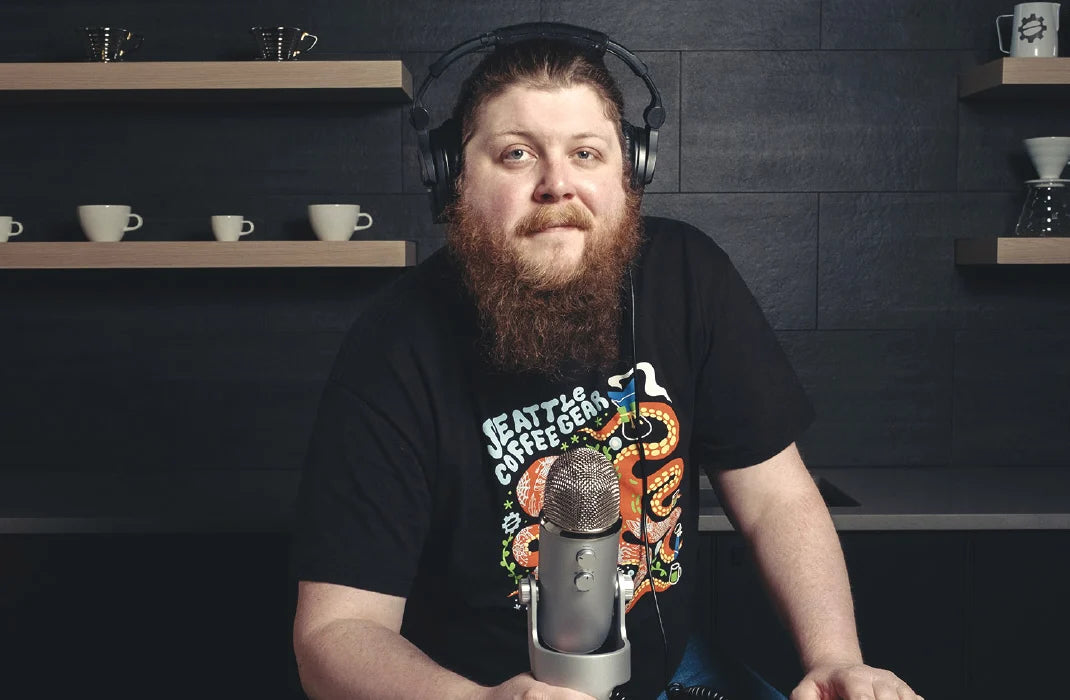If you use a bottomless portafilter you may have noticed times where your shot drips or sprays out of the edges of your portafilter. This is called channeling. Channeling occurs when water flows unevenly through your espresso puck, leading to the effect you're observing. So why is this bad? Why does it happen? What can you do about it? We're here to help!
Why is Channeling Bad?
The first and most obvious reason that channeling is bad is the mess. As John points out in the video below, the effect is similar to holding your thumb over a garden hose. This spray can lead to annoying clean up across your countertop and your machine. Even if it's just uneven drips, it can ruin the aesthetics of your bottomless filter.
More importantly - channeling indicates uneven extraction. Making espresso, or any coffee for that matter, is a chemical process. Water bonds with molecules in the coffee grounds to create that delicious beverage. Key to this process is even bonding, which we call extraction. Channeling indicates that some water is routing through your espresso puck unevenly, which affects the taste of your shot.
Why Does Channeling Happen?
Channeling can occur for a variety of reasons. Water flows through your puck via the path of least resistance. This concept should make it obvious why you might find channeling occurring. If an area of your espresso puck is blemished, uneven, or uneven, water will flow to that area of the portafilter more easily than the other areas.
Once this effect starts, it will continue to get worse over the course of the shot. This is why it can be very difficult to "save" a shot that is channeling, even if you have a machine with features like flow control. Regardless of where the channeling is happening and what's causing it it will lead to under extraction of the coffee on the less resistant parts of the puck (as the water flows through faster), and over extraction where flow is stricter (as the water struggles to push through the grounds).
How Can I Fix Channeling?
First, you need to make sure you're dialed in correctly with consistent grounds. If you're trying to use a grinder with a less precise finer end of its scale you may find that your grounds are uneven. As you can imagine, this will lead to channeling.
Once you've ensured that you're dialed in at the right settings and have consistent grounds, the real troubleshooting can begin.
In order to help prevent the effect of channeling, the first thing you'll want to do is ensure even distribution of grounds. You can use tools like a LUCCA WDT or Breville Distributor Duo to properly break up clumps and then evenly balance grounds in the portafilter. If you don't have tools like this available, you can gently tap the sides of your portafilter with your hand to at least attempt to evenly distribute the grounds.
The next step is tamping. You'll want to make sure that you apply even pressure with your tamp and that you don't press down on one side of the puck. Eyeball this after your tamp to make sure that your grounds are even in the filter - if they aren't then water will absolutely channel through the lower side of the puck!
Finally, it's important to make sure that you handle that portafilter with a bit of care as you attach it to the grouphead. If you remove your tamper unevenly, bang the puck on the machine, or wrench it too hard into the grouphead you may crack the puck, which will also cause channeling.
For more tips on how to solve channeling you can check out John's video below. Let us know in the comments how you've solved this problem on your setup!

